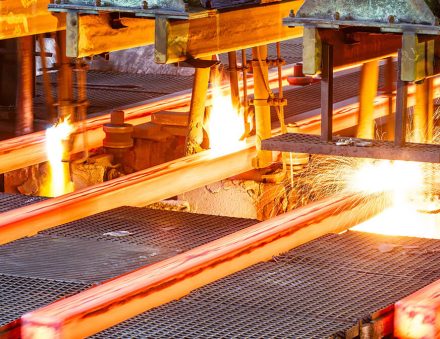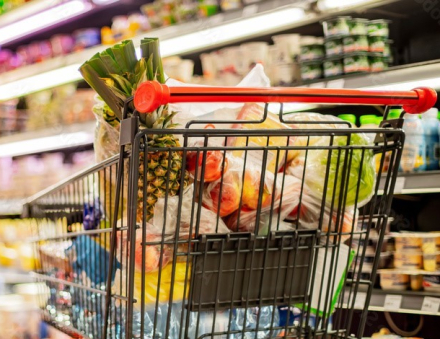

Mining & Minerals Processing: Extract Maximum Value from Your Supply Chain
What our customers say about us
Redefine your operational resilience
You’re on the precipice of a radical shift in how you operate. Forces beyond your control could have a damaging impact on your supply chain unless you take action. It’s time to redefine your operational resilience.
The challenge
Metals and minerals organizations are grappling with unprecedented pressure, from market volatility and rising energy costs, to the need to minimize environmental impact.
Success hinges on making the best decisions across your value chain to drive efficient, future-ready operations. It’s more than just balancing operational and financial goals; environmental objectives are equally important. Sustainable optimization is the solution to successfully juggling this new trinity at all levels – planning, organization, and ecosystem.
Your planning teams can dynamically manage unpredictable blips in their plans when external or internal disruptions occur. With real-time data and the ability to model alternate scenarios, they are empowered to consistently deliver the most optimal plans.
Let’s explore some of your planning challenges.
-
SituationPlanning teams at different mining/blending/processing sites operate independently to manage the complexity, each creating their own plans.
-
ComplicationThe use of spreadsheets means each team is working on different, often outdated information. Changes in every plan compound inefficiencies, especially during times of disruption.
-
QuestionHow can you integrate planning to ensure all teams collaborate towards the same goals?
-
Answer
A solution that unifies data and provides a single source of truth for all stakeholders – planning, execution, procurement, and ESG. Now, everyone works towards the same goals and can see the impact of any changes across the entire value chain.
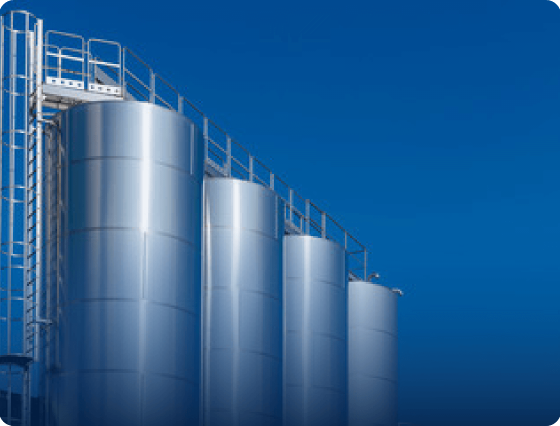
-
SituationExtracted raw materials are not homogenous or predictable. The quality and grade directly impact what you can produce and whether you can meet demand.
-
ComplicationStocking points have products that do not yet have a buyer, resulting in higher inventory costs and lower profits. To meet existing demand, you may need to blend or transport products.
-
QuestionHow do you effectively balance demand-pull and supply-push to smoothe capacity, minimize costs, and maximize profit?
-
AnswerWith complete visibility of the entire value chain from the mine to the customer, you can compare multiple scenarios to find the optimal plan to meet demand, considering inventory, ports, blending facilities, processing plants, and transportation.

-
SituationYour planners have many constraints to consider to find a feasible plan – mineral/metal properties, blending and refining processes, storage, and logistics.
-
ComplicationDisruptions, increasing legislation, and additional constraints are being added to the mix. With so much on their plate, planners settle on a ‘workable’ plan instead of an optimal one due to their current toolset.
-
QuestionHow can you capture and evaluate all supply, production, storage, and logistics constraints to make the optimal plan?
-
AnswerAn integrated planning solution automatically considers your business-specific rules and constraints, empowering your planners to find the optimal plan, not just a feasible one.

-
SituationDepending upon the mineral/metal, you might have to mix products in blending facilities, combine them in transportation, or place them in smelters. The final product may also involve some form of processing or refining.
-
ComplicationDue to limited supply chain visibility, it can be difficult to calculate how long blendable stock can support production, how to consume products, or how to refine products, leading to suboptimal plans and reduced profitability.
-
QuestionHow can you ensure high-quality product standards by optimizing blending and refining processes?
-
AnswerHaving a solution that manages your constraints and has an optimizer algorithm within it helps you make better decisions. It tells you how to optimize blends in facilities or transit and/or combine different materials in production/processing.
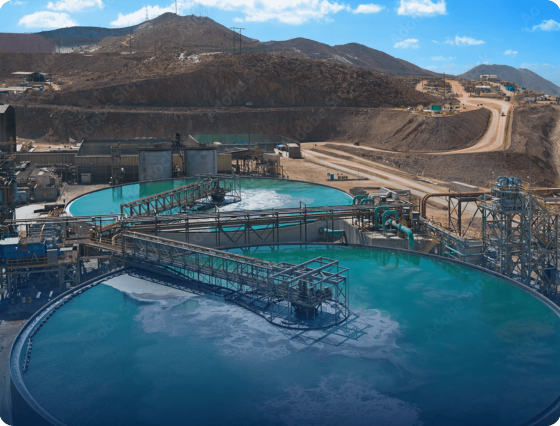
-
SituationIncreasing disruption, global conflicts, and lower-grade raw materials are some of the challenges that prevent your planning and executing teams from delivering on their ideal plans.
-
ComplicationBalancing all the constraints with a higher frequency of disruptions while still planning locally for a global supply chain makes your planner’s job incredibly complex.
-
QuestionHow can you make the best plan in limited time despite facing increasing disruptions and constraints?
-
AnswerGive your planners end-to-end visibility and the ability to compare multiple scenarios. This empowers them to see how their decisions impact organizational-level KPIs, enabling them to always deliver the best plan – no matter the disruption.

-
SituationOrganizations are increasingly under pressure to run their operations sustainably. This means improved end-to-end efficiency, reduced waste, and optimal utilization of byproducts.
-
ComplicationYour current tools cannot accommodate sustainability parameters (or have limited functionality). As a result, your planners cannot see the real impact of their choices on overall company SDGs.
-
QuestionHow can you find the most optimal path to profitability while adhering to sustainability requirements?
-
AnswerThe planning team needs a virtual twin of your value chain. This ensures that every decision you make is the optimal one, balancing all of your organizational goals – operational, financial, and environmental.

-
SituationPlanning teams at different mining/blending/processing sites operate independently to manage the complexity, each creating their own plans.
-
ComplicationThe use of spreadsheets means each team is working on different, often outdated information. Changes in every plan compound inefficiencies, especially during times of disruption.
-
QuestionHow can you integrate planning to ensure all teams collaborate towards the same goals?
-
Answer
A solution that unifies data and provides a single source of truth for all stakeholders – planning, execution, procurement, and ESG. Now, everyone works towards the same goals and can see the impact of any changes across the entire value chain.

-
SituationExtracted raw materials are not homogenous or predictable. The quality and grade directly impact what you can produce and whether you can meet demand.
-
ComplicationStocking points have products that do not yet have a buyer, resulting in higher inventory costs and lower profits. To meet existing demand, you may need to blend or transport products.
-
QuestionHow do you effectively balance demand-pull and supply-push to smoothe capacity, minimize costs, and maximize profit?
-
AnswerWith complete visibility of the entire value chain from the mine to the customer, you can compare multiple scenarios to find the optimal plan to meet demand, considering inventory, ports, blending facilities, processing plants, and transportation.

-
SituationYour planners have many constraints to consider to find a feasible plan – mineral/metal properties, blending and refining processes, storage, and logistics.
-
ComplicationDisruptions, increasing legislation, and additional constraints are being added to the mix. With so much on their plate, planners settle on a ‘workable’ plan instead of an optimal one due to their current toolset.
-
QuestionHow can you capture and evaluate all supply, production, storage, and logistics constraints to make the optimal plan?
-
AnswerAn integrated planning solution automatically considers your business-specific rules and constraints, empowering your planners to find the optimal plan, not just a feasible one.

-
SituationDepending upon the mineral/metal, you might have to mix products in blending facilities, combine them in transportation, or place them in smelters. The final product may also involve some form of processing or refining.
-
ComplicationDue to limited supply chain visibility, it can be difficult to calculate how long blendable stock can support production, how to consume products, or how to refine products, leading to suboptimal plans and reduced profitability.
-
QuestionHow can you ensure high-quality product standards by optimizing blending and refining processes?
-
AnswerHaving a solution that manages your constraints and has an optimizer algorithm within it helps you make better decisions. It tells you how to optimize blends in facilities or transit and/or combine different materials in production/processing.

-
SituationIncreasing disruption, global conflicts, and lower-grade raw materials are some of the challenges that prevent your planning and executing teams from delivering on their ideal plans.
-
ComplicationBalancing all the constraints with a higher frequency of disruptions while still planning locally for a global supply chain makes your planner’s job incredibly complex.
-
QuestionHow can you make the best plan in limited time despite facing increasing disruptions and constraints?
-
AnswerGive your planners end-to-end visibility and the ability to compare multiple scenarios. This empowers them to see how their decisions impact organizational-level KPIs, enabling them to always deliver the best plan – no matter the disruption.

-
SituationOrganizations are increasingly under pressure to run their operations sustainably. This means improved end-to-end efficiency, reduced waste, and optimal utilization of byproducts.
-
ComplicationYour current tools cannot accommodate sustainability parameters (or have limited functionality). As a result, your planners cannot see the real impact of their choices on overall company SDGs.
-
QuestionHow can you find the most optimal path to profitability while adhering to sustainability requirements?
-
AnswerThe planning team needs a virtual twin of your value chain. This ensures that every decision you make is the optimal one, balancing all of your organizational goals – operational, financial, and environmental.

Optimize your operations to boost efficiency, profitability, and sustainability
Integrated decision making
Break down information silos that hinder visibility to achieve transparency on consumption, shipments, and inventory positions. Make business decisions confidently by locking your corporate KPIs into every planning decision.
Profit maximization
Identify opportunities to create value in your supply chain by calculating non-linear recoveries and valorizations, resulting in optimized planning in feed mix production, blending, and transportation. With optimal plans, you maximize your chances of boosting efficiency and profits.
End-to-end scenario optimization
Always be prepared by considering factors such as input costs/prices, transportation costs, market demands, and changes in production conditions. Assess the impact of ideas, investments, and decisions in the full end-to-end business context.
Optimized blending
With an optimizer, make SMART decisions on how to mix products in blending facilities, combine them in transportation, or place them in a smelter. Always know how long current blendable stock can support production, the risks, and the optimal way to move/consume products.
Complex constraint control
Optimize your business according to your KPIs while adhering to complex supply, production, and storage constraints. Instead of being reactive, your planners decide confidently when something fails or when constraints change – change in legislation, for example.
Sustainable optimization
Sustainable optimization will help you achieve your targets – operational, financial, and environmental. This is possible because all your KPIs, including sustainability targets, are embedded in the planning solution. So, all decisions are made with the impact on the organization and the environment in mind.
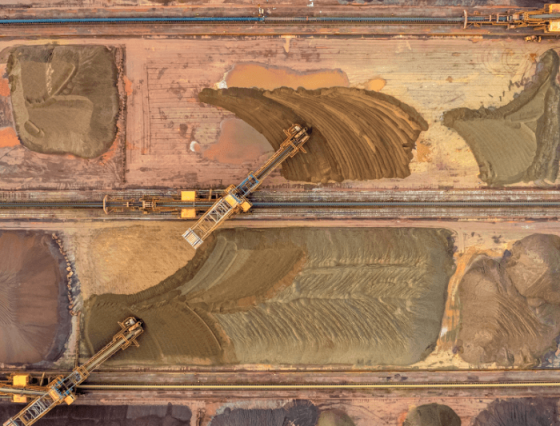
Beyond Extraction: Mining and the Road to Net Zero
The energy transition hinges on the mining industry’s success. But how can producers effectively balance financial goals with environmental responsibility? Discover key trends and challenges reshaping the industry and learn how integrated supply chain planning is crucial for navigating the path to Net Zero.

